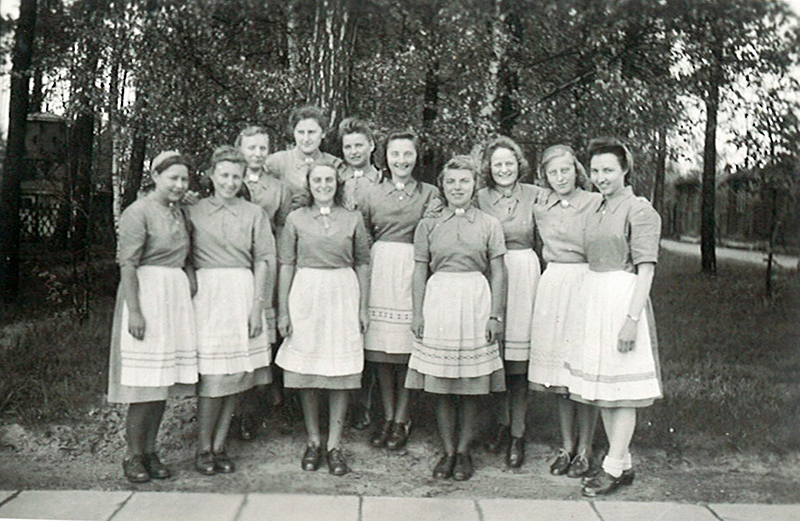In May, The Sarnia Journal published a photo from John Helle’s family album photo showing Adolf Hitler touring a small village in a jeep, his arm extended in the Nazi salute.
And that is how Sarnia’s Gertrude Stefkovic remembers seeing the German dictator for the first and only time – riding through her village in a motorcar.

Gertrude Stefkovic
Gertrude was 10 years old when Hitler came to power in 1933 in her native Germany. Immensely popular with the masses, he reinvigorated a sluggish German economy, built roads, created jobs and, in 1937, rolled out the Volkswagen, or “people’s car.”
Gertrude grew up in what later became East Germany in a town near the Polish border, one of six girls in a family with one boy, Rudolph. Her father, a wounded Great War veteran and postal clerk, was a member of the Nazi Party. Every Wednesday night and Saturday morning, Gertrude attended meetings of the Hitler-Jugend, or Hitler Youth, where she listened to Nazi propaganda and sang patriotic songs.
When the war began, brother Rudolph, a medic in the German army, left with the troops invading Poland and was never seen or heard from again. Following high school, she and some of her sisters attended a farming camp, one of hundreds throughout the German Fatherland.
In the patriarchal and conservative view of the Nazis, the ideal woman was in a household, raising children for the Aryan Master Race and the 1,000-year Reich. Unmarried young women were expected to help the farmers grow food for the rapidly growing German Army.
Following 30 minutes of Nazi propaganda during breakfast, many of the women were taken to farms in the area for fieldwork. Others grew vegetables at the camp, tending gardens, washing garments, and preparing dinner for the farmhands when they returned from the fields.
Following her stint in the farming camp, Gertrude looked after children. She was working at a school in Austria when the war ended and the Americans liberated her area. Many of her sisters had to hide from invading Russians on the eastern front. The Russians had been known to assault German women in the path of their armies driving toward Berlin.
Gertrude became a nurse after the war, working at a hospital in Berchtesgaden, a beautiful area of the Bavarian Alps at which Hitler had often vacationed. In 1951, the Canadians arrived looking for nurses and Gertrude came to Canada, settling in Toronto, St. Catharines and Windsor before finally arriving in Sarnia in the early 1960’s.
Now 94, Gertrude was cleaning through her home on Emma Street and preparing to move into an apartment when she discovered some of her old artifacts and called me to tell the story presented here.


